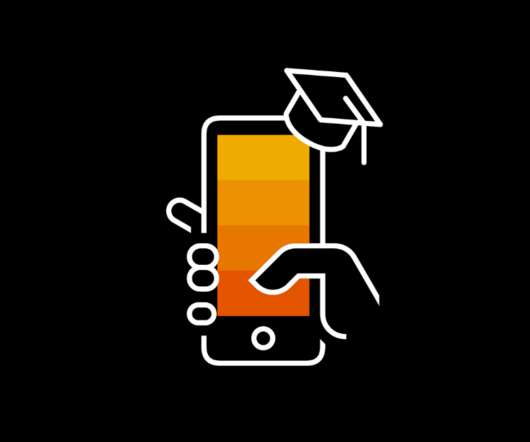In this article, I have shared 10 irreversible e-learning trends
“Remote learning, distance education” refers to spending a lot of time in front of a computer screen. You can listen to prerecorded lectures and see your lecturers talk in class.
This is how you learn to divide your home and your school: Interactive projects are difficult to maintain due to Zoom and internet connectivity issues.
E-learning has given a whole new meaning to a concept that has been around for a long time: learning.
There has been a significant increase in the usage of remote learning at all levels recently. This has given educators fresh perspectives on e-learning. In certain cases, getting e-learning to work has proved difficult. In other places, e-learning has opened up new doors.
Many businesses and organisations are currently utilising the trendy e-learning trends that are getting more prevalent as we approach 2021. Some of these fads are expected to pass quickly. These types of trends in e-learning are only going to persist a limited period. They’ll vanish as swiftly as they appeared.
Other trends, on the other hand, have proved that they can continue a long period. They like to use cutting-edge technology to make online education more accessible to students from all walks of life and to help them stay in school. Those who fail to keep up with such developments will be left behind.
Table of Contents
The following are 10 irreversible e-learning trends that cannot be reversed:
Mobile Learning (M-learning)
Microlearning
Attention span: Humans have a very short attention span. The most popular trends are “bite-sized morsels” of news, entertainment, and social material that people like to share. Microlearning programmes will be added to e-learning to meet the needs of people who have short attention spans and different learning styles.
A lot of students don’t like long modules. This is not true for 40-minute taped videos. Microlearning in 5-minute films, on the other hand, keeps students’ attention longer than 40-minute taped videos do.
In microlearning courses, students can work on certain skills for a few minutes at a time, which helps them remember more.
Take advantage of these short lessons if you don’t have a lot of time to study. The “micro-lessons” you can take in your spare time can be full lessons, even if you only have a few minutes to do them. You can also take short tests and review lessons quickly. You can also do this.
This format lets you get credentials that will make you more qualified and open up more job opportunities for you, so it’s a good idea to use this one. Microlearning is a popular way to learn in the workplace and at school.
Short-form microlearning courses are more likely to be remembered by most e-learners. These classes are better for people who learn in different ways. ADD and ADHD are two types of learning disorders that can be treated with help from these things.
Virtual Reality (VR) and Augmented Reality (AR)
Increased Accessibility For all Online Students
Increased accessibility means that all learners can have more control over and enjoy their learning paths more.
One of the advantages of e-Learning is that virtual learning experiences can be changed, which is one of them. Students of different learning styles can benefit from e-Learning because it can be used for so many different things.
Trends like the use of platforms and changes to learning will make e-Learning more accessible.
User-Generated Content
Students can use e-learning platforms to share their knowledge, skills, and interests with each other and with their teachers, so they can all learn from each other. Instructors can help students be more involved and own their education by letting them crowdsource and choose content.
Films that help students understand a hard subject can be shared with the rest of the class. If a teacher wants to teach creative problem solving and teamwork, they make class assignments that make it possible for students to work together to learn about something.
Because students choose the content they want to learn about, this is a great way to get more students excited about learning. Instead of being “taught at,” kids are given the chance to learn socially. It’s also good for content creators because students put together their own material.
Gamification & Game-Based Learning (GBL)
Make the most of your online platform to give students a “game experience” that they can all be a part of. Putting games into e-Learning has been shown to help students remember what they’ve learned and improve their performance.
It’s especially different from hearing a lecture or reading a book.
Gamification is a new trend that makes learning more fun by making it more fun. It makes you feel good when you finish tasks and levels.
Instructional designers will use gamification to make online courses more fun. This makes sure that students are involved in their education and that their learning experiences are better. Game-based education is a sure way to get rid of the distractions that people have when they use e-Learning.
Virtual Conferences
Personalized Learning
Education has always been the same, with a rigid structure and little room for individuality for students, as it has always been. Artificial intelligence and e-learning are powerful tools that can help you build a personalised, interactive learning environment.
People who use e-learning software can get information about their habits and skills. Adaptive e-Learning is a way for teachers to get help from artificial intelligence. There is a way that it learns to help each student with their study habits on a one-to-one level.
There will be more help for students who are having trouble with multiplication. Students who are doing well with the curriculum will get more ideas for learning. This e-Learning method can help more people participate by giving them a personalised learning path.
The personalised learning trend not only gets students more involved, but it also improves their grades. As the software gets better, it will give suggestions before a teacher notices that a student is falling behind, which will make it more likely that the student will succeed.
Collaborative e-learning
Through the unique collaboration of all of its learners, e-Learning will build a sense of community. People talk about the curriculum as a group when students interact with the content and each other. Students can learn just as much from each other as they do from formal teaching, and they can also learn from each other.
This fad focuses on one of the most important parts of learning: how you interact with other people. As a result of e-Learning, close friendships between students will be turned into opportunities for learning in the community.
Some online learning platforms have built-in features that make it easier to connect with other people. Each student will then be able to connect. They can do this alone, in small groups, or as a whole. This lets people form relationships in a way that is very similar to how people learn in person, and it also lets them learn in a way that is very natural to them.
Collaborative learning can actually happen in real life for students in their community thanks to instructor-led conversations, challenging ideas, and each student’s own unique background and experiences.
Social Learning
The most ambitious way for educators to build online learning communities is to use the power of social media. Education and society can work better together if they use social media. Most people spend their time on social media, so this is a great way to do that.
Instructors in e-Learning spaces bring learning into online social networks by encouraging debate with hashtags, setting up forums in places that already exist, and encouraging students to use the platforms for their education.
More Social learning will be used by e-Learning teachers to help students better understand current events. Instructors will help students become lifelong learners by focusing their use of technology on learning from the rest of the world. e-Learning will be able to make good use of the community that is already there.

For many people, the educational experience is all about bringing people together from different backgrounds, experiences, and lives to work together. We think that as e-Learning grows into 2021, teachers and students will start to build communities in real-life classrooms and other places.
In 2021, e-learning will grow even more. The most successful and positive e-Learning trends will keep going. Do you plan to study more in 2021?
Are you a teacher who wants to learn more about e-Learning? You can start learning about e-Learning right now, and we’ll help you get ready for the future of learning.
Quick Links:






